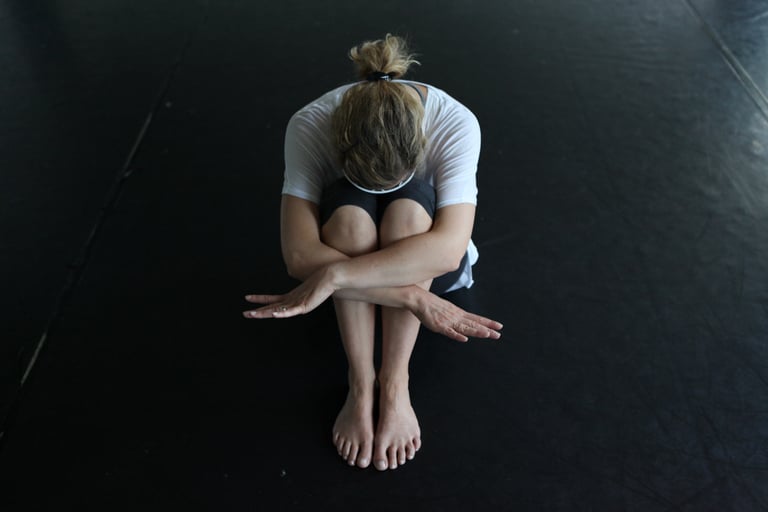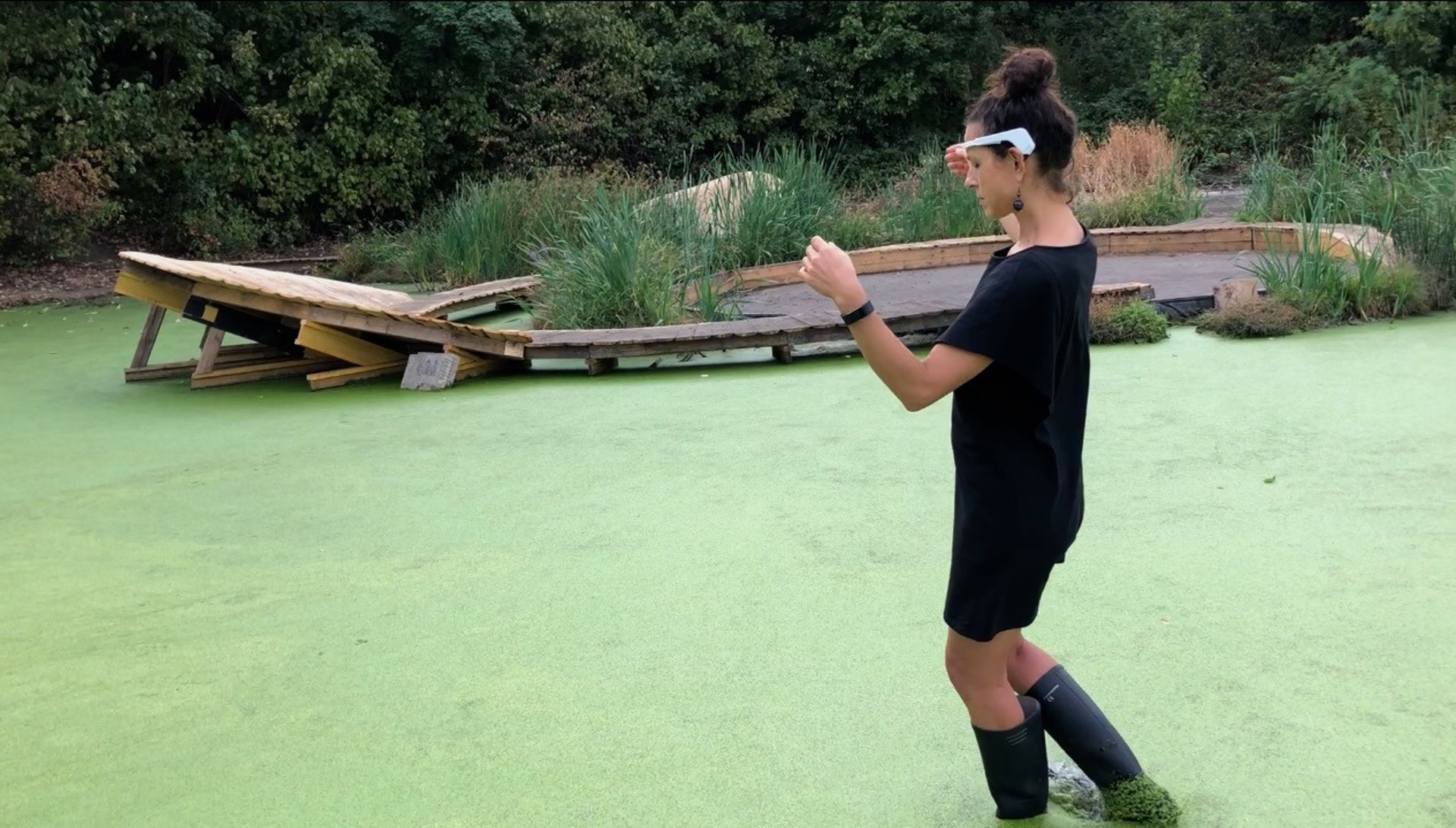
LIQUIDITY
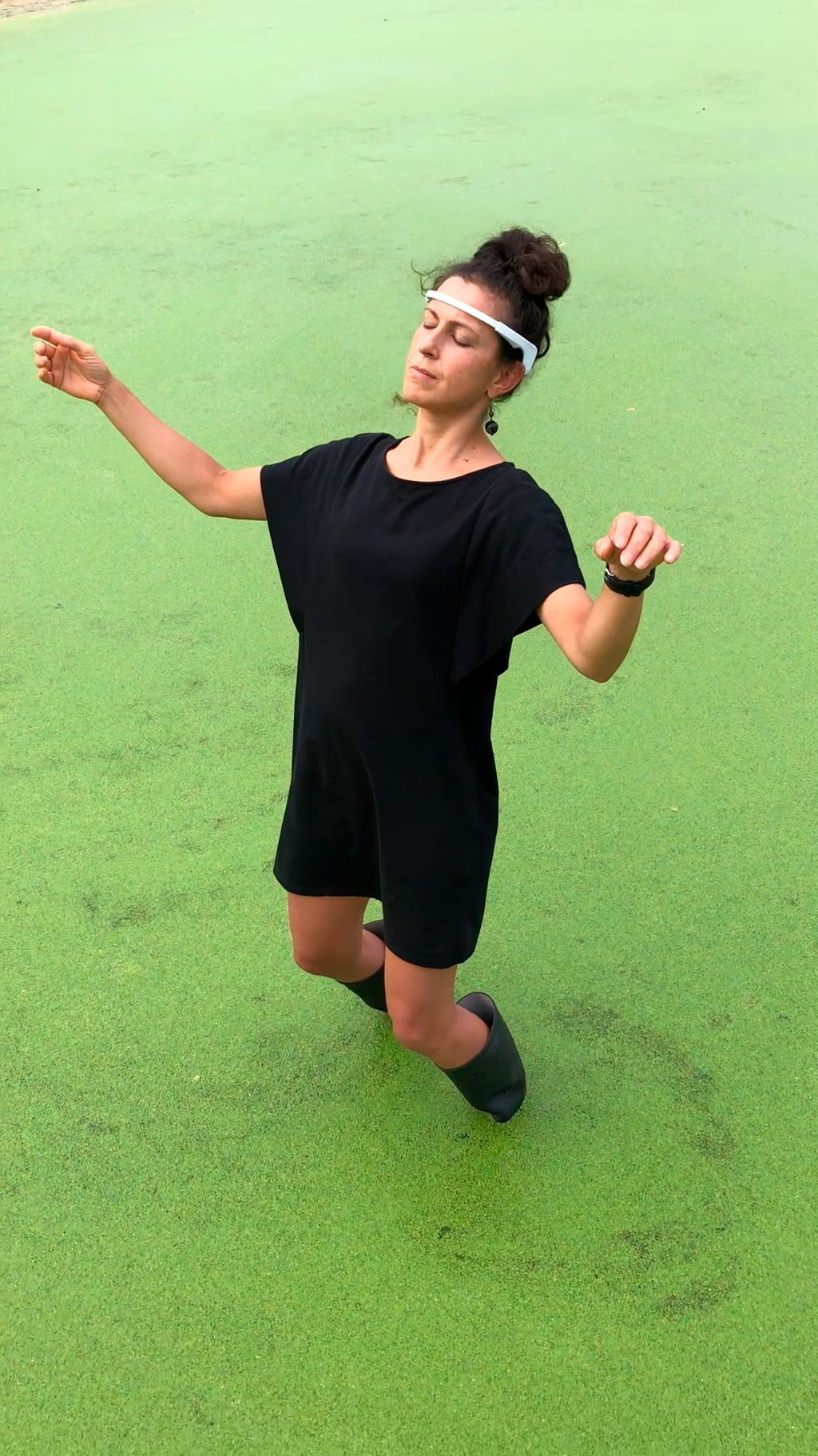

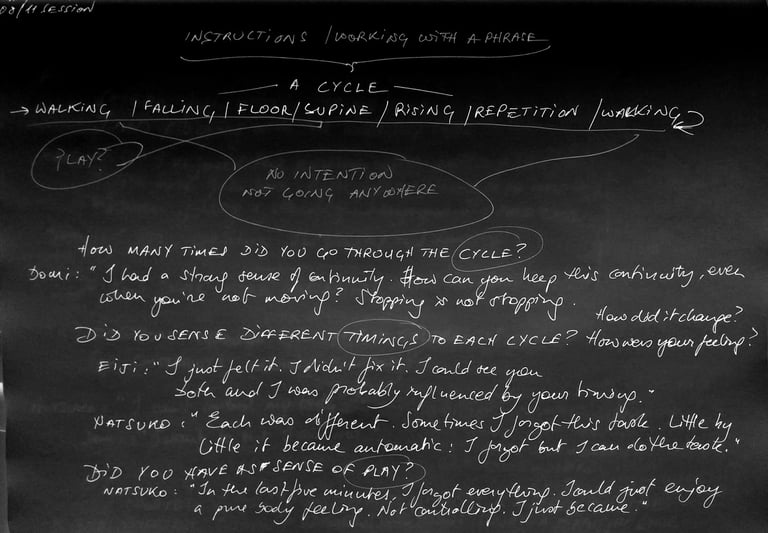

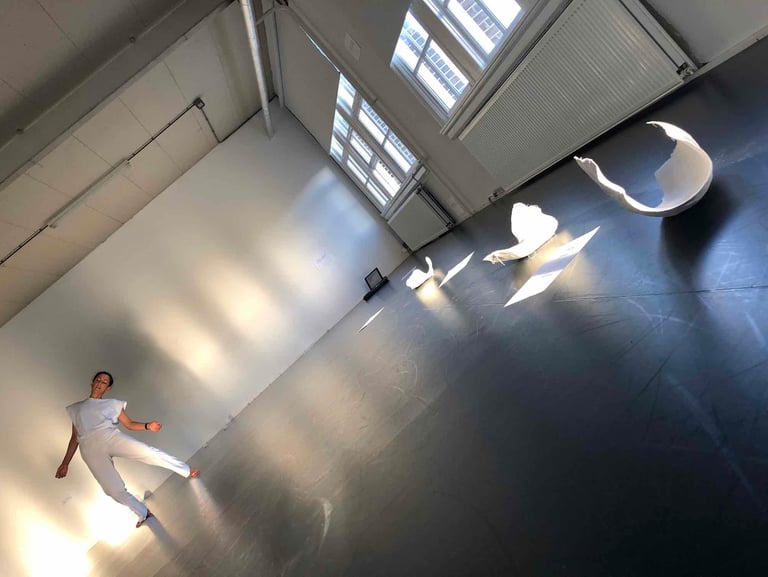

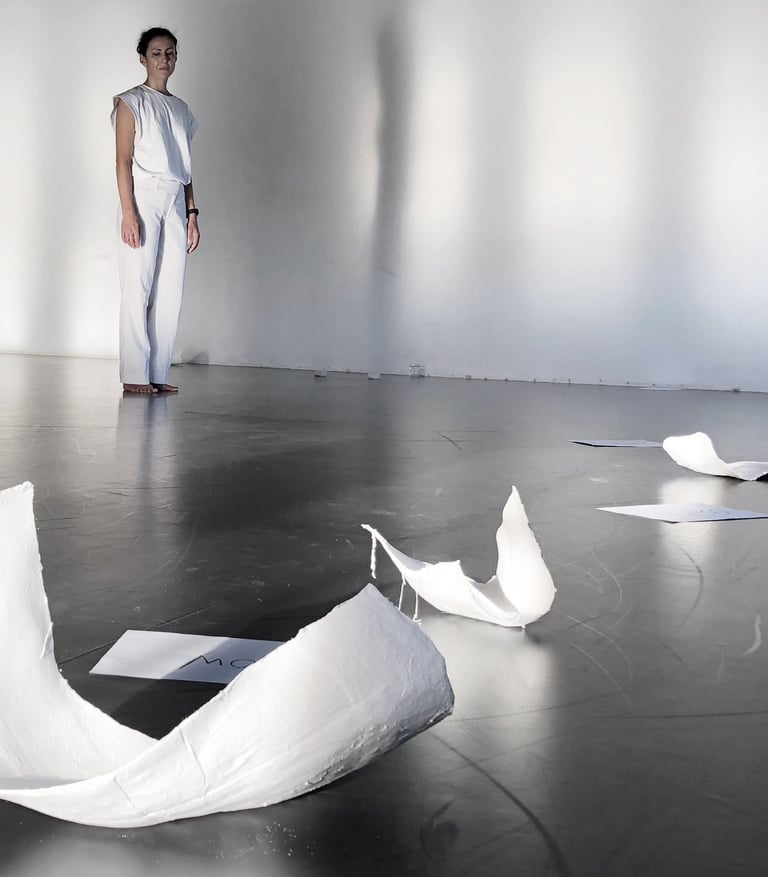

Body, meditation electrocephalogram (EEG), data, pigment pen on paper, choreographic plaster casts, participatory movement, dimensions variable
A One Year Meditation on the Juice of my Blood, 2018
Who leads? Who follows?
On 1 January 2018, I decided to practice letting go. I didn’t know what that meant, but I knew it had to be serious and sustained — at least a year long. I was thinking of Tehching Hsieh’s One Year Performances (again).
I got up, set the meditation timer, stood still in the room. The first attempt would last ten minutes.
I already knew a little about surrender from the practice of Collapse, but Liquidity was not going to be about collapsing. My question was about movement: can I travel from one point to another — across space — in a state of letting go? What would it mean to move without the conscious intention to arrive; or to take an unpredictable path simply to see where it leads?
This is what happens:
Just as when I first discovered Collapse, the tension I am holding begins to surface in a feeling of wobbling. The task is to observe, to do nothing, to let it appear. As expected, I can feel my weight pulled by gravity. What could this movement of liquidity become? How does a body move without will or intention — when even the act of letting go is itself an act of will?
I stood in stillness. My legs softened. My weight began to sink.
Then another movement revealed itself — the blood and its flow, a quiet internal tide amplified by the attention paid to it. I wasn’t willing it, and I couldn’t make it stop. It simply was. I placed my most delicate awareness on it and began to move with it.
How do you get from point A to point B by surfing the tide of your own blood? How do you navigate space in defiance of gravity’s downward pull — attempting zero gravity while your feet remain on the earth?
That evening I wrote:
For at least five minutes each day, I will stop all other activity, stand at a chosen point, and imagine the space surrounding my body as liquid, viscous, thicker than air. This imagining will change something, though I don’t yet know what. There is already an altered sense of the body, of consciousness, of movement. With each daily practice, this will evolve into further knowing.
I will record the time I spend practising Liquidity. I will sometimes use wearable technology to measure the biodata of this activity — and attempt to glitch its categories by introducing a new one: Liquidity, how to become a water body (again).
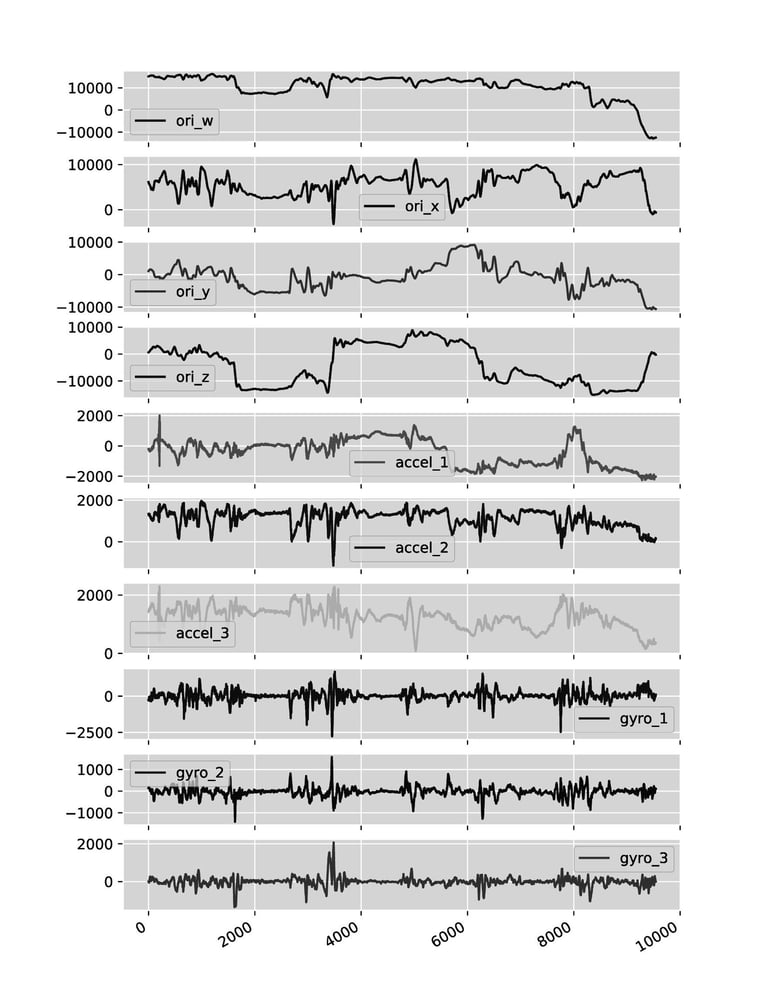


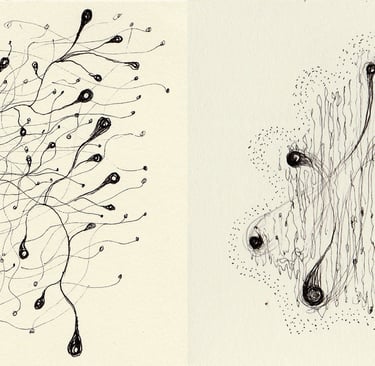

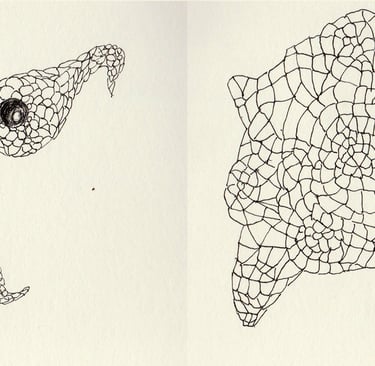
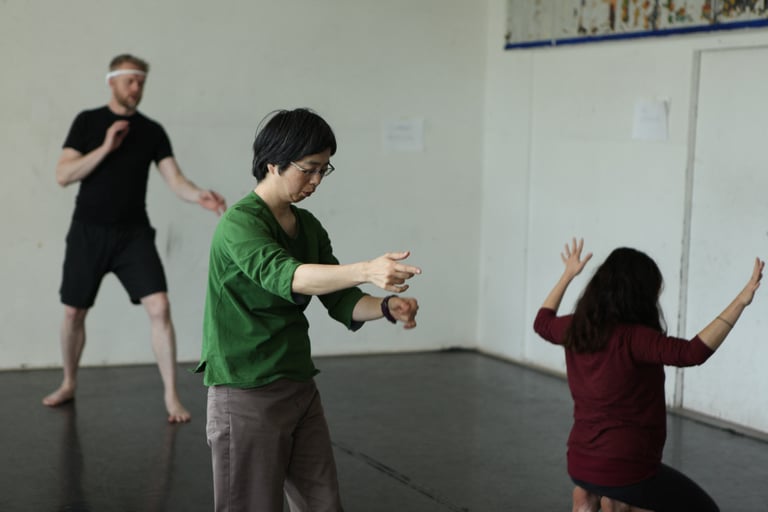

What Do We Know About Free Time?: participatory movement meditations
Through Liquidity, I discovered a way to transform the experience of time — to make it flow by being immersed within it. What began as a practice of letting go became a study of how the body can move like water: to be porous, guided by currents, rather than will.
In this state, time morphs. It begins to circulate through the body, with the heaving of the oceanic breath. This process of liquefaction is also about liquidating the perception of the scarcity of time.
I created a moving meditation for collectively exploration the precious time we each have on this earth through the open question, What do we know about free time? These sessions invite participants to experience time not as something to be managed, monetised, or optimised, but as something to inhabit — fluid, relational, shared and concretized in flesh. I especially work with freelancers, artists, and all those navigating the gig economy, often as a way to sustain the very work that they love, and which gives their lives meaning.
Liquidity asks: what happens when we treat time as a body of water — one we can enter, move through, and surrender time pressure to. Liquidity is really a practice of (self)love.
